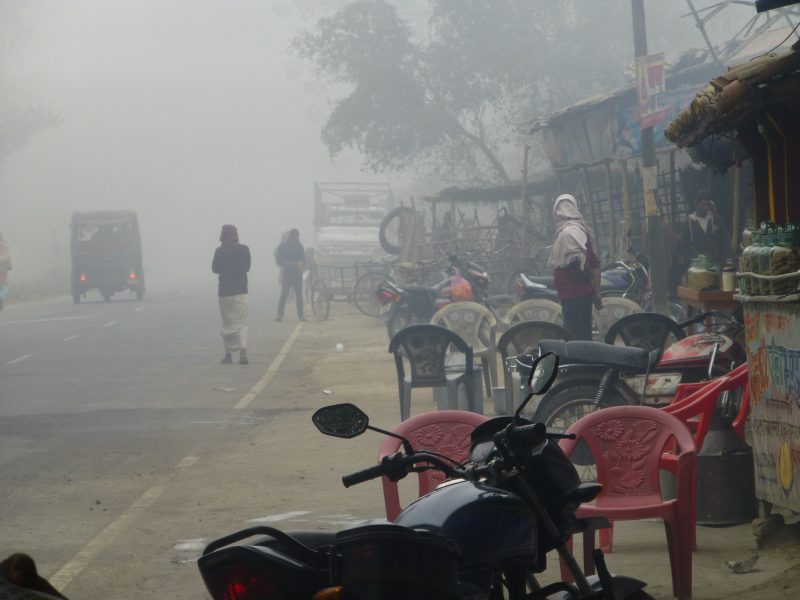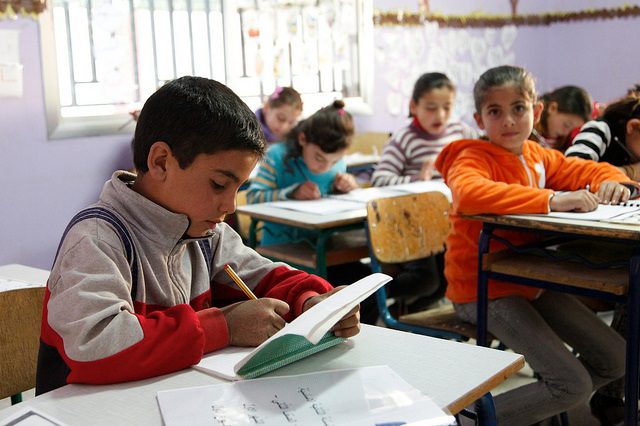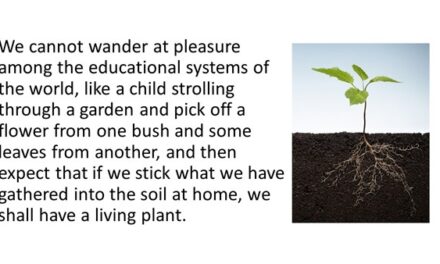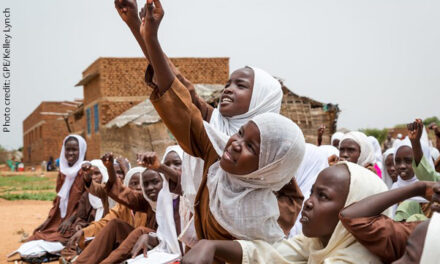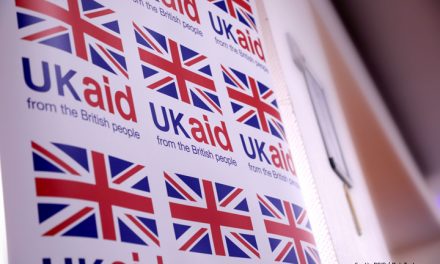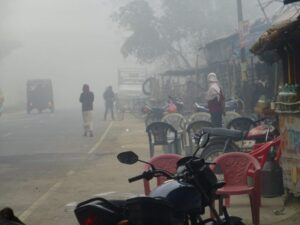 So now we have it. After innumerable meetings over several years the final text for Transforming Our World: The 2030 Agenda for Sustainable Development has been circulated and will be ratified at the UN General Assembly on 25th-27th of September. For those who have escaped its multiple drafts and are unfamiliar with the final version of the sustainable development goals they can be found at: https://sustainabledevelopment.un.org/post2015/transformingourworld
So now we have it. After innumerable meetings over several years the final text for Transforming Our World: The 2030 Agenda for Sustainable Development has been circulated and will be ratified at the UN General Assembly on 25th-27th of September. For those who have escaped its multiple drafts and are unfamiliar with the final version of the sustainable development goals they can be found at: https://sustainabledevelopment.un.org/post2015/transformingourworld
This blog, on the occasion of the UKFIET biennial international education conference, addresses development issues raised by the Sustainable Development Goals (SDGs). The SDGs provide the framework within which the new international goals, targets and indicators for educational investment will be realized. The merits of the specifically educational targets (‘Goal 4’) are the subject of a separate monograph at https://www.opensocietyfoundations.org/sites/default/files/lewin-goals-indicators-edu-dev-20150515.pdf The UKFIET conference is an opportunity to road test the SDGs and identify how Learning for Sustainable Futures (the conference theme) is likely to be different to the learning for development strategies that have shaped education systems in low income counties since the ‘Framework to Meet Basic Learning Needs’ was launched at Jomtien in 1990.
Let me make it clear from the outset that I see the value of an international architecture for education and development. The UN system at its best can galvanise initiatives that might otherwise not happen, and it can use its unique convening power to nudge development in ways that increase the probability of humanity being happier and still in existence by the end of this millennium. The SDG process has been far reaching and involved a very wide range of stakeholders. It has provided another reminder that the resources of the planet are finite, time may be running out to act, and more people need to understand that they are indeed “in it together”. It has also highlighted how critical it is that the gains of the last two development decades are consolidated and the unfinished business of education in development is not forgotten in a flurry dedicated to following new fashions. ‘Education for All’, nested within the Millennium Development Goals (MDGs), has been an impressive success albeit that conflict, fragility and resource constraints have stalled progress in some countries. These are good things associated with international initiatives. So also is the well conceived theorizing around development which “meets the needs of the present without compromising the needs of the future” (Brundtland Report 1987) and has resulted in a sequence of international events and commitments starting with the Earth Summit in Rio in 1992. Growing evidence on climate change influenced by human activities, escalating crises reflected in cross border migration and ambiguities of citizenship, and global financial set backs create a changing set of development needs that all need to be addressed transnationally.
The purpose of blogs is to challenge and provoke debate. The questions for this blog is what are the SDGs, are they fit for purpose, and are they sustainable? There are now 17 Sustainable Development Goals and 169 Associated Targets covering economic, social and environmental aspirations. This can be compared with the 8 goals, 18 targets and 48 indicators of the Millennium Development Goals one of which was specifically educational (universalizing access to basic education), and another (gender equity) was cast partly in educational terms. Education alone now has 10 targets and 42 indicators, with more likely to be invented. These fall under the overarching goal to ‘ensure inclusive and equitable quality education and promote lifelong learning opportunities for all’. Both the Jomtien and Dakar global education conferences that defined ‘Education for All’ had a single goal and six educational targets. A rule of thumb in cognitive psychology is that most people can only remember seven things, plus or minus two, so Jomtien and Dakar met this criteria. The SDGs stretch the memory envelope. What cannot be remembered easily is often overlooked. This may have occurred to the drafters of the SDGs who, when they reached SDG target number 164, decided there was a need to “Enhance Policy Coherence for Sustainable Development”. 164 targets is a lot to interrelate and cohere!
So there are too many goals and targets all of which cannot be priorities. The longer the list the easier to ignore the inconvenient parts, and the greater the opportunity to arrive at the kind of paralysis by analysis that focuses on measurement at the expense of meaning. Is this goal inflation? A case of ‘no goals left behind?’ Or a demonstration that the more inclusive process which generated the SDGs has led to less focus, more contradictory goals and targets, and a lack of prioritization or honesty about the costs and trade offs of achieving the aspirations?
Analysis of the text does suggest an exaggerated anxiety that readers will not “get” the main message or understand its priorities. In a 29 page document “sustainable” and its derivatives are used 180 times, and “development” 170 times. A quick search and delete of “sustainable” reveals the document remains coherent and appears to lose little meaning without the use of “sustainable” at all (try it!). Over-using an adjective like ‘sustainable’ is unlikely to overcome any fundamental flaw in the meaning given to development. Sustainable development may be an oxymoron – development that is not sustainable is not development. No known definition of development assumes a transient change of state for the better followed by a loss of valued gains. Stressing sustainability without a clear definition may simply distract from the real discussion of what is and should be development, and what should be the role of education. The commonsense view should prevail is that development that results in a collapse (of the environment, the economy, society, or educational opportunity) can hardly be called development. In short the question is how is sustainable development different from development, mirroring the debate about how successful globalization differs from sustainable globalization as Little and Green have argued? Nouns that can be verbs with meaning, do not need qualifying adjectives.
It may be better to talk of “good” development and “bad” development. This is much more helpful than talking in a vague and repetitive way about sustainable development. It has the virtue of encouraging explicit discussion of what development is and how changes in national circumstances can be compared and valued. It encourages valuing the future as well as the present, with an appropriate discount rate for the environment, social conflict and economic wellbeing. Significantly the SDGs have no targets for the appropriate discount rate, or any commitment to precautionary principals to hedge the future of the environment. The narrative is much more about poverty than it is about wealth, though clearly the two cannot be separated. Population, demographic and migration issues that are central to education and development are also not considered in any detail.
To be fair there is an attempt in the text to define sustainable development. The definition used has three main dimensions – ‘economic, social and environmental’. This does not seem fundamentally different to plain ‘old’ development. For those with long memories there has always been a battleground of ideas on how to achieve and maintain growth within ideologies from the right and from the left, the sociological critiques of dependencia have questioned the destabilising aspects of transnationalisation since the 1960s, and ‘Limits to Growth’ by Meadows et al catalyzed the environment debate in development studies in the 1970s. Development in the SDGs now requires “eradicating poverty … as an indispensable element …and (eradicating) hunger’. The new agenda seeks to “combat inequalities within and among countries, build peaceful, just and inclusive societies, protect human rights and promote gender equality, and ensure the lasting protection of the planet and its natural resources”. So far so good, and so familiar to any student of development studies with memories of basic needs development, redistribution with growth, gender and development, human development and rights based approaches, globalization and Seers ‘meaning of development’ and the Stern Review. This is a comforting confirmation that the priorities of the last five decades of development remain relevant and in fashion, but it is hardly paradigm shifting.
More problematic for some will be to realize the aspiration for “sustainable, inclusive and sustained economic growth (yes it does say sustainable and sustained in four words!), and shared prosperity and decent work for all, taking into account different levels of national development and capacities”. Is this “Development in a Divided World” as explored by Seers and Joy in the 1970s, a nascent neo-Rostowian theory of stages of development, or an invitation to abolish economic boom and bust? More seriously, in the planglossable world of sustainable development where everything is for the best, it is apparently possible to see no contradiction between promoting unending economic growth, ensuring full employment of everyone in the workforce, and living within the finite resources of the planet. The SDGs include commitments to increase productivity and production not only within the industrial workforce, but also through doubling the productivity of small scale food producers, and enhancing production in large scale agriculture. All this with simultaneous commitments to full employment and decent jobs and no mechanism to ensure technological change outpaces population growth (another definition of sustainable development which is attributable to Pearce in the 1980s). No strategy is offered to manage the additional burden this will place on the ecosytem of the planet. Nor is there any reflection on the lessons from the last five decades of development where so many have experienced improvement in material wealth and wellbeing alongside adverse impacts on climate, air and water quality, reductions in biodiversity, and an increase in the diseases of affluence.
The text wrestles repeatedly with tensions between a globalized and holistic approach to development, and an enduring attachment to the nation as the indivisible unit of development with many special and unique characteristics justifying special consideration. In an impressive linguistic judo trick the tension is resolved. “The SDGs and targets are integrated and indivisible, global in nature and universally applicable, taking into account different national realities, capacities and levels of development and respecting national policies and priorities. Targets are defined as aspirational and global, with each government setting its own national targets guided by the global level of ambition but taking into account national circumstances”. Examples of what this looks like in practice, especially for education systems, are strangely absent. The flavor of the SDGs, and their format, which volunteers few opportunities to modify, adapt or otherwise locate the goals and targets in different country circumstances, could easily be seen as symbolic of a “one size fits all” message emanating from the centre.
Paradoxically inclusivity can make every country a special case. The text notes “Each country faces specific challenges in its pursuit of sustainable development. The most vulnerable countries and, in particular, African countries, least developed countries, landlocked developing countries, and small island developing states deserve special attention, as do countries in situations of conflict and post-conflict countries. There are also serious challenges within many middle-income countries”. Easy to agree. But there are 54 African countries, 14 least developed countries not in Africa, 9 landlocked developing countries not otherwise counted, and 44 additional developing small island states. This totals 121 countries of the 195 countries in the world. Since there are 74 high income countries in the World Bank classification, this means there are no countries that do not fall into one or other special groups. Some are in one of the existing groups and are also experiencing conflict and post conflict reconstruction, and some are middle income countries. At a minimum it would be helpful to illustrate how SDGs might be modified to the special needs of different groups.
The text offers a ‘new agenda’ for sustainable development which seeks to provide ‘inclusive and equitable quality education at all levels’. Education is mentioned 22 times. On almost all occasions the reference is to access to education and to participation in education as a necessary component of development with little indication of what might matter for sustainability. Goal 4 – the education goal and targets – is surprisingly mute on the subject of sustainability which is only mentioned in one of the 10 education targets. Target 4.7 seeks to “ ensure all learners acquire the knowledge and skills needed to promote sustainable development, including, among others, through education for sustainable development and sustainable lifestyles, human rights, gender equality, promotion of a culture of peace and non-violence, global citizenship and appreciation of cultural diversity and of culture’s contribution to sustainable development’. But would it lose anything in translation without the over used “sustainables”? The text leaves open whether it is promoting sustainable educational development or education for sustainable development. It lingers longer on the former than the latter.
Many more questions nag away. The SDGs, especially those in education, have turned out to be ‘more of the same’ as I argued in 2012, and fail to articulate a new and compelling vision, or plausible diagnosis of the shortcomings of the existing architecture. The SDGs are a list not a recipe, as was also the case with the MDGs. Achieving all the SDGs may make the world a better place. There is a broad consensus that most of the outcomes they flag are desirable. However, all the Goals taken together are no guarantee that development will take place, and are not in themselves the basis for a development strategy. They are context blind, and insensitive to the priorities that all governments have to identify. The Goals are not distributional in character – a major omission if poverty is partly the product of the distribution of wealth as well as its generation. Moreover, the SDGs are presented statically, with no obvious mechanisms to evolve. The MDGs remained enshrined in stone (or cast in concrete) for 15 years. This is longer than any corporate development strategy is likely to be relevant, and longer than most national governments last in democratic states. Those who snooze may well lose, and hang on to priorities overtaken by events linked to climate processes, social movements and economic realities that have a global momentum. The SDGs should be conceived of as dynamic, responsive and iterated with changing circumstance if they are to be durable and resilient over 15 years. That would be an advance over the MDGs.
Education is at the heart of development and learning creates and transfers capabilities. It may not guarantee enlightenment and freedom from superstition but it makes it more likely. The SDGs locate education more as part of the definition of development than as a means to achieve it and fail to advance discussion of what kind of education is to be valued for what purpose? An opportunity has been missed to dwell more on that which transforms minds, hands and hearts and offer insight into what education designed to promote development that is climate friendly, human rights respectful, and economically advantageous might look like.
Is it unreasonable to expect more clues as to what should go into the 15,000 hours of school that the SDGs anticipate for all children? What would constitute an education fit for purpose in the 21st century that is different to that which proved so successful in the 20th century? What would close the cognitive chasm that exists between the achievement of 15 year olds in different countries that is equivalent to six years of schooling? What would reduce the differences between the richest and the poorest students within low income countries which mean that the highest scoring students perform at rich country levels, and the lowest simply fail to score? How can all 15 year olds understand enough science and technology, and logical reasoning, to have an informed view on climate change, pollution, urbanization, and epidemic and endemic diseases? What kind of citizenship education might contribute positively to reductions in conflict and levels of distressed migration and would global citizenship add any value? What competencies related to health and wellbeing, and environmental economics, should every 15 year old have?
A convincing theory of change and “good” development remains conspicuous by its absence in the SDGs and strikingly so in relation to education systems. If the specification of Goal 4 is read on its own it appears substantially similar to the Jomtien and Dakar goals and targets. There is nothing in the text that really explains how the new education goal and ten targets are any more or less likely to lead to sustainable development than the previous sets of goals and targets. Or how the new goals and targets for education will relate to all the other SDGs most of which have educational dimensions. Or why “reaching the furthest behind first” makes sense where failure to deliver services is systemic, rather than on the margin of fundamentally sound education systems.
The staggering claim that “we have mapped the road to sustainable development” in one short document, sounds like a triumph of aspiration over cartography. It comes with a limited awareness of the history of sustainable development since the Brundtland Commission of 1987 introduced the idea into mainstream development theory. The map on offer can be tested at the forthcoming UKFIET conference on Learning for Sustainable Futures – Making the Connections to see if the signposts are clear, the learning needed plausible, and whether the Brundtland’s criterion that ‘the needs of the present are met without compromising the needs of the future’ are met. This will determine if the SDGs are sustainable. We should all ask how can we do better than we have in the last two development decades?

